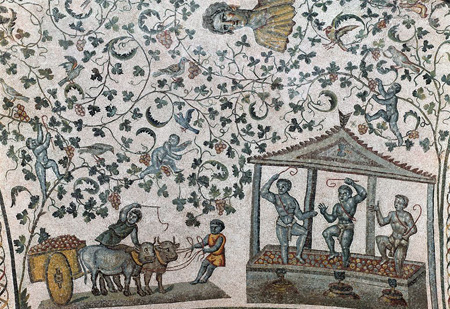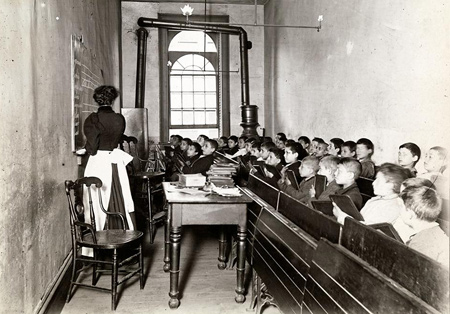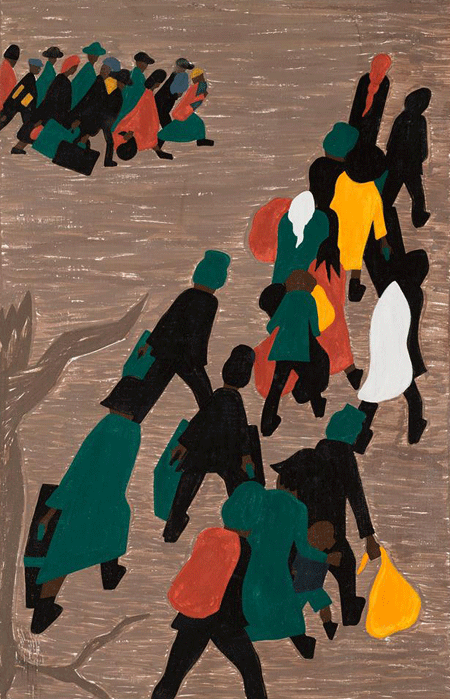
Wine Making (Vine Shoots, Putti Gathering Grapes and Male Bust; Grape-gathering Cupids); detail | c. 350 CE | Chiesa di S. Costanza (Rome, Italy) | Image and original data provided by SCALA, Florence/ART RESOURCE, N.Y. ; artres.com ; scalarchives.com | (c) 2006, SCALA, Florence / ART RESOURCE, N.Y.
Gregory K. Martin, Ph.D.
Upper School Director, La Jolla Country Day School
In a compelling study of Western United States history, Patricia Nelson Limerick quotes Nannie Alderson, a former Virginian who moved to Montana in 1883. Alderson, looking back on a unique feature of her experience, recollected that there was on the frontier an abundance of cans: “Everyone in the country lived out of cans […] and you would see a great heap of them outside every little shack” (“Closing the Frontier and Opening Western History”).












